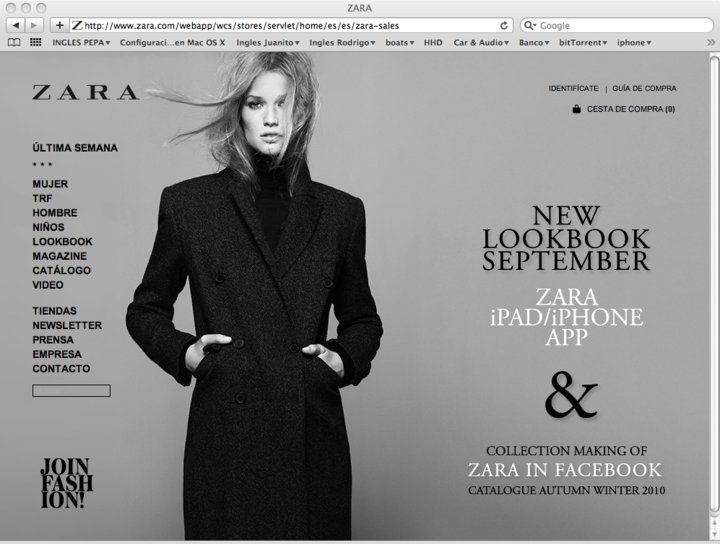Zara is Launching Online Shopping
Europe’s largest clothing retailer, Spain’s Inditex, is taking its flagship Zara brand online, but it can expect stiff competition from other giants of high-street fashion already well-established in cyberspace. Zara‘s virtual boutique will be available on Thursday in selected European markets: Spain, Germany, France, Italy, Portugal and Britain. From 2011, it will be expanded to […]

Europe’s largest clothing retailer, Spain’s Inditex, is taking its flagship Zara brand online, but it can expect stiff competition from other giants of high-street fashion already well-established in cyberspace.
Zara‘s virtual boutique will be available on Thursday in selected European markets: Spain, Germany, France, Italy, Portugal and Britain.
From 2011, it will be expanded to the United States, Japan and South Korea.
But it will enter an already crowded sector, where its main rivals in low-cost fashion have been operating for years.
US retailer Gap, which has been online in the US since 1997, expanded the service to 55 countries on August 16.
Sweden’s H&M, Europe’s second-largest clothing retailer, has been selling online since 1998 in seven countries, including Germany, and plans to move into another major market, Britain, on September 16.
Zara’s late entry to the market may be a surprise, but it may also have anticipated a boom in cyberspace clothes shopping.
Clothing sales represented just 2.5 percent of online commerce in Spain last year, and 5.6 percent in France, according to industry experts in these countries.
Another high-street brand, Mango, has been online since 2009, but receives only about 1.0 percent of its revenues in this way.
Gap has performed better, pulling in 1.1 billion dollars in online sales last year, or 7.7 percent of its total.
But a recent poll by the Nielsen institute in 55 countries showed that clothes are now the second most popular products online, after airline tickets but before books.
Mango’s aim of multiplying its online sales seven-fold in three years is one indication that the market may be about to take off.
Zara‘s arrival “is eagerly awaited, as we are in the middle of boom in Internet clothing sales,” said Nathalie Gennerat, a consultant at the French Fashion Institute.
She pointed to Britain, where almost 10 percent of clothing is purchased online.
Previously people were reluctant to buy clothes online because it is impossible to try them on first.
“There was also the question of shipping costs” and the problem of returns, said Jacqueline Anderson, an analyst with Forrester Research.
But companies now pay closer attention to some of these concerns, offering to pay a certain amount of the shipping charges or making exchanges easier, she said.
Zara said it wants to “reproduce the buying experience of its boutiques on the Internet,” with 100 percent of its products available at the same price of its high-street stores, and extend its website to the 77 countries where it is already present.
It has already prepared the ground. Its Facebook page, launched last year, now has 4.4 million fans.
Its iPhone application has been downloaded some two million times. And, even though you can’t yet shop there, its official website received 33.5 million visits last year.
Inditex, which owns seven other brands including Massimo Dutti and Bershka, sees the move as a “major strategic step” which will boost sales rather than eating into the earnings of the shops themselves.






